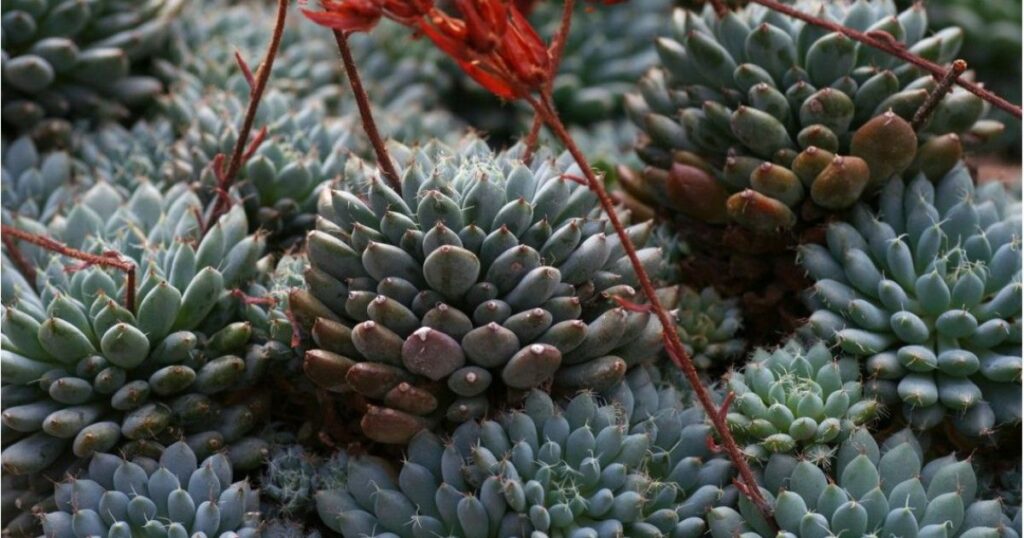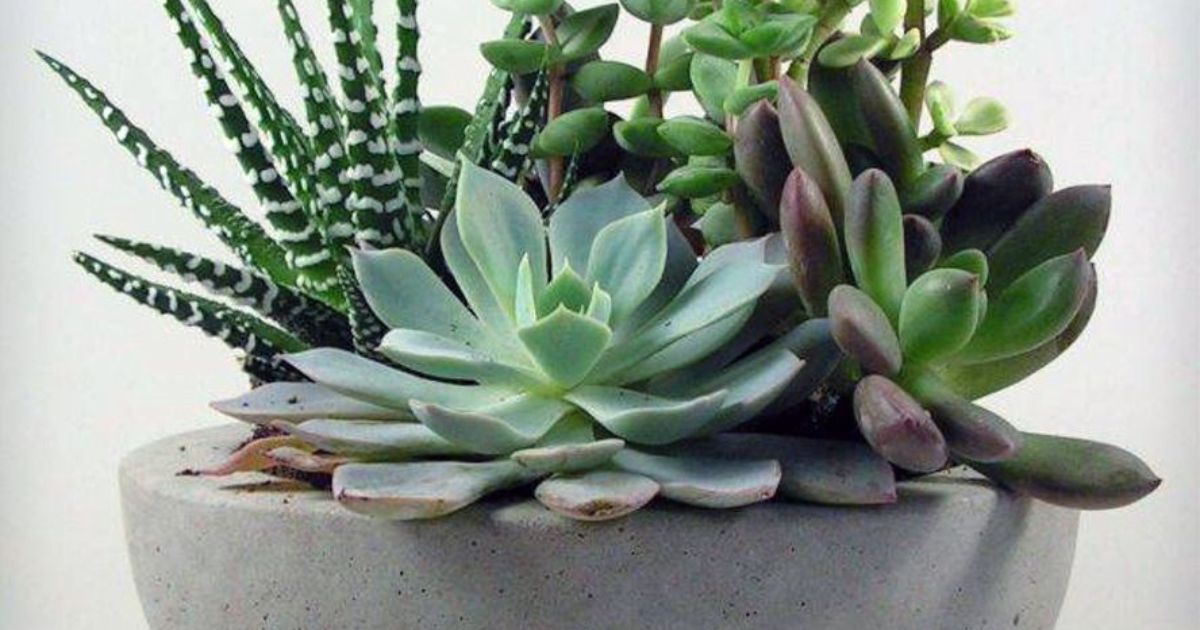Succulent Soil For Other Plants refers to the practice of using soil typically formulated for succulents in the cultivation of various other plant types. Succulent soil is characterized by its well-draining properties, often composed of a mix of materials like sand, perlite, and potting soil.
Can You Use Succulent Soil For Other Plants? This question piques curiosity and opens the door to exploring the versatility of succulent soil beyond its intended use. As gardeners, it’s natural to seek efficiency and multifunctionality in our gardening practices.
While succulent soil is tailored for the unique needs of succulents, its characteristics may benefit other plants as well. The well-draining nature of succulent soil can be advantageous for plants that prefer drier conditions or are susceptible to root diseases caused by excess moisture.
Why should you use cactus soil?

Cactus soil is essential for the optimal growth of succulents and cacti due to its specialized composition. This type of soil is designed to provide excellent drainage, preventing waterlogged conditions that can lead to root rot in these drought-tolerant plants. When considering factors like will succulents grow in shade, it’s important to note that cactus soil’s unique qualities are crucial for succulents thriving in varying light conditions, ensuring their overall health and resilience.
Cactus soil typically contains a mix of materials such as sand, perlite, and potting soil, ensuring a well-aerated environment for the plant roots. The unique qualities of cactus soil make it a crucial component for the health and vitality of succulents, offering the arid conditions these plants thrive in.
Using cactus soil is particularly beneficial for succulents and cacti because it replicates their native habitat’s well-draining characteristics. This type of soil allows water to pass through quickly, preventing excess moisture retention that could harm these plants.
Cactus soil also provides a stable foundation for the plants, supporting their upright growth and aiding in nutrient absorption. Overall, the use of cactus soil is a strategic choice for cultivating these specialized plant varieties, ensuring they receive the specific care they require for flourishing.
How to make your cactus soil?
Creating your cactus soil is a simple and cost-effective option for gardening enthusiasts. A basic recipe involves combining three parts regular potting soil with one part coarse sand or perlite. This mixture replicates the well-draining qualities of commercial cactus soil.
Additionally, adding some peat moss to the blend can enhance water retention without compromising drainage. Mixing these components thoroughly creates a homemade cactus soil that suits the needs of succulents and cacti. This DIY approach allows gardeners to have control over the soil composition, tailoring it to the specific requirements of their plants.
Making your cactus soil is a straightforward process that enables customization based on your succulents’ unique needs. This hands-on approach also allows for experimentation, as you can adjust the ratio of potting soil to sand or perlite to achieve the desired level of drainage. By creating your cactus soil, you not only save costs but also gain a deeper understanding of your plants’ preferences and how soil composition influences their overall health and growth.
How Does Cactus Soil Differ from Potting Soil?
| Characteristic | Cactus Soil | Potting Soil |
| Drainage | Excellent drainage, preventing waterlogging. | Varies may retain more moisture. |
| Composition | Mix of sand, perlite, and potting soil. | Diverse, may include organic matter and fertilizers. |
| Aeration | Provides a well-aerated environment for roots. | Aeration levels can vary. |
| Suitability | Ideal for succulents and cacti. | General-purpose, suitable for a wide range of plants. |
Cactus soil differs significantly from potting soil in terms of drainage, composition, aeration, and suitability for specific plant types. While cactus soil prioritizes excellent drainage and aeration for succulents, potting soil is more versatile, catering to a broader range of plants with varying moisture needs.
How to Tell if the Plant Will Do Well in the Soil
Determining whether a plant will thrive in cactus soil involves considering its native habitat and water requirements. Plants that naturally grow in arid regions or exhibit drought-tolerant characteristics are likely to do well in cactus soil. Succulents, cacti, and other desert-dwelling plants are prime candidates for this type of soil.
Conversely, plants that prefer consistently moist conditions or have higher water requirements may not thrive in cactus soil. Observing a plant’s natural environment and researching its specific needs are essential steps in ensuring compatibility with cactus soil.
To assess a plant’s suitability for cactus soil, consider its water preferences and the conditions of its native habitat. If the plant naturally experiences dry, arid climates, it is likely to adapt well to the well-draining properties of cactus soil. However, for plants that thrive in more humid environments or have a preference for consistently moist soil, alternative potting mixes may be more suitable.
Cactus Soil Good Soil for Regular Plants?
While cactus soil is specially formulated for succulents and cacti, it may not be the optimal choice for regular plants with different moisture requirements. The excellent drainage properties of cactus soil, while beneficial for drought-tolerant species, can pose a challenge for plants that prefer consistently moist conditions.
Regular plants often thrive in potting soils that retain more moisture, providing a stable environment for their roots. Therefore, it is advisable to use cactus soil exclusively for succulents and cacti, reserving standard potting mixes for other plant varieties to ensure their specific needs are met.
Cactus soil, with its emphasis on rapid drainage and aeration, may not provide the ideal conditions for regular plants that require more moisture. Standard potting soils are formulated to retain water for a more extended period, catering to the needs of a diverse range of plants. While cactus soil excels in supporting the growth of succulents and cacti, it is crucial to choose soil mixes that align with the specific moisture preferences of different plant types to promote their overall health and vitality.
Can You Use Cactus Soil for Herbs?
Cactus soil, designed for succulents and cacti, may not be the best choice for herbs, which generally prefer a more moisture-retentive environment. Herbs typically thrive in well-draining yet moisture-retaining soil to support their lush foliage and aromatic qualities. While cactus soil provides excellent aeration and prevents waterlogging, it may not meet the water needs of herbs that require a consistent level of moisture for optimal growth. Therefore, it is advisable to use specialized herb or potting soil when cultivating herbs, ensuring that the soil composition aligns with their specific requirements.
When considering using cactus soil for herbs, it’s essential to recognize the distinct moisture preferences of these plants. Herbs, known for their aromatic leaves and culinary uses, benefit from soils that maintain a more constant level of moisture.
While cactus soil excels in providing a well-draining environment, it may not fulfill the moisture needs of herbs, potentially hindering their growth and development. Choosing a soil mix tailored to the unique requirements of herbs ensures a supportive foundation for their overall health and vigor.
Advantage of Cactus Soil
The primary advantage of using cactus soil lies in its ability to create an environment that mimics the natural habitat of succulents and cacti. The well-draining properties of cactus soil prevent waterlogging, a common issue in traditional potting mixes, and help mitigate the risk of root rot.
This specialized soil promotes healthy root development, ensuring that the plants receive the necessary nutrients while maintaining the dry conditions they thrive in. The use of cactus soil also simplifies care routines, as it aligns with the specific needs of succulents and cacti, making it an excellent choice for both novice and experienced gardeners.
The notable advantage of cactus soil is its capacity to replicate the arid conditions of succulents’ native habitats. This unique feature not only safeguards against overwatering but also enhances aeration, fostering robust root systems.
FAQ’s
Can cactus soil be used for other types of plants?
Cactus soil is tailored for succulents and cacti, offering optimal drainage. While it may benefit plants with similar moisture preferences, it may not be suitable for those requiring consistently moist conditions.
How does cactus soil differ from potting soil?
Cactus soil prioritizes excellent drainage with a mix of sand and perlite, ideal for succulents. In contrast, potting soil is more diverse, catering to a broader range of plants with varying moisture needs.
Is cactus soil suitable for regular plants?
Cactus soil, designed for arid-loving plants, may not be ideal for regular plants requiring more moisture. Standard potting mixes, retaining water for longer periods, are better suited for the diverse needs of regular plants.
Can cactus soil be used for growing herbs?
Cactus soil, optimized for succulents, may not provide sufficient moisture for herbs. Herbs generally thrive in well-draining yet moisture-retaining soil, making specialized herb or potting soil more suitable for their growth.
What is the advantage of using cactus soil?
The primary advantage of cactus soil lies in its ability to replicate the arid conditions of succulents’ native habitats. It prevents waterlogging, mitigates the risk of root rot, and simplifies care routines by aligning with the specific needs of succulents and cacti.
Conclusion
In wrapping up, understanding the unique properties of cactus soil is key to successful gardening. It’s the go-to choice for succulents and cacti due to its excellent drainage, preventing root rot and supporting their natural habitat. While cactus soil may not be the universal solution for all plants, its tailored design offers a practical approach for those seeking to cultivate arid-loving species.
Experimenting with different soils for various plants allows gardeners to explore what works best for each unique species, ensuring a thriving and healthy garden. So, as you embark on your gardening journey, remember that the right soil sets the foundation for your plants’ well-being, and with cactus soil, you’ve got a specialized tool for the flourishing of succulents and cacti.










